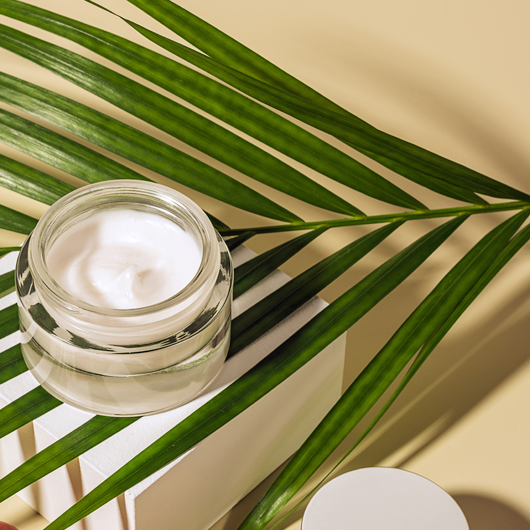The Right Way to Wash Your Face

In seven easy steps, here is the right way to wash your face. Taking care of your skin now leads to more vibrant skin in the future.
Step 1: Use lukewarm water and a mild cleanser. Gently pat dry. Substitute an exfoliating cleanser once a week to help keep your skin looking bright.
Skincare Tip: Change your pillowcase weekly and use a fresh towel daily to avoid contaminating your face.
Step 2: Apply toner with a cotton ball to deep clean pores. Repeat this step if needed. This step is beneficial for those with oily skin.
Step 3: Apply any topical medications such as acne treatments or retinol.
Step 4: Apply an eye cream and anti-aging serum and let dry. This will help boost collagen production and target fine lines and wrinkles.
Skincare Tip: Use the press-and-pat method when applying eye cream. Dab small dots under the eye area, continuing out and around and up along the eyelid. Press the product into the skin, then release. Avoid pulling or tugging, which can damage the delicate skin.
Step 5: Apply a moisturizer. Skipping this step can cause your skin to dry out and cause it to produce more oil.
Skincare Tip: Using a moisturizer locks inactive ingredients and helps products be more productive.
Step 6: Apply sunscreen with an SPF 30 or higher to protect your skin from the sun's damaging UV rays.
Step 7: Apply a primer or mineral foundation and proceed with your makeup routine.
How to Exfoliate
Our own DIY Diva, Tonia, shows you how to exfoliate your face correctly. Proper exfoliation is a necessary step in any skincare routine. Unfortunately, after age 30, our skin does not act like it did when we were young. The rate at which it sloughs off old, dead skin cells slows. Thus, dull, lackluster complexions begin to show the signs of aging.
For glowing skin, exfoliation improves the natural sloughing process revealing a healthy and fresh new complexion. It also helps deep clean pores and removes impurities. It is key to keeping your skin looking youthful. To exfoliate: Separate your face into fourths.
The chin, cheek, T-zone, and forehead are a great way to separate the face into fourths. Apply a quarter-size amount to the front and gently massage in an upward circular motion. Continue this process for 30 to 60 seconds. Rinse with lukewarm water and pat dry.
Benefits of Regular Exfoliation
A great perk of regular exfoliation is that you rid your face of dead skin cell build-up. As a result, the outer layer of skin looks dull, sometimes greasy, and tends to magnify pores. Removing the excess build-up will unveil fresher and newer skin. As a result, pores are minimized and look smaller.
Exfoliate for Smaller Pores
Who doesn't want small pores? Especially since pores tend to look larger the older we get. However, if you have a lot of dead skin cell build-up, you may want to head to the spa. The spas offer microdermabrasion. While on the costly side, microdermabrasion will remove years of build-up.
They usually recommend a series of 6 treatments. They have appointments spaced out a week apart so that your skin can rest in between treatments. How do you know what treatment is right for you? Manual exfoliation or microdermabrasion? On a clean facial surface, take a piece of tape and lay it across your forehead.
Then pull it off gently; if you can see your skin imprint, then you have build-up. If it is cakey, you may want to consider microdermabrasion.
Another form of exfoliation is peels that use acids. Fruit acids, such as glycolic, will remove the outer layer of skin and produce the same result as the microdermabrasion. A series of six peels are usually done over many weeks. The downside of a peel is that it will take your skin some time to recover; this can take up to a week and a half.
You can also shed the outer layer of skin and look like a Wookie for a few days. If you use a peel, it is best to do it when you have no special events.
No matter what form of exfoliation you choose, make sure you maintain your results by exfoliating manually.


 Buy with Prime
Buy with Prime






